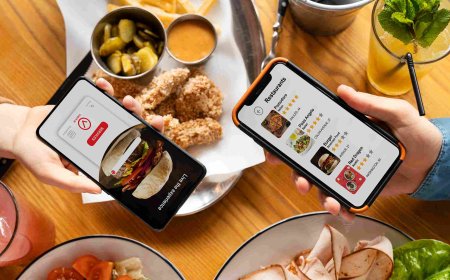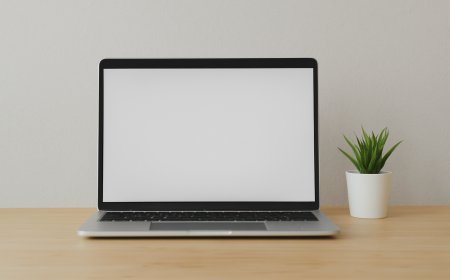How to Join Wellness Programs in Phoenix
How to Join Wellness Programs in Phoenix Phoenix, Arizona, known for its vibrant desert landscape and year-round sunshine, has emerged as a thriving hub for holistic health and wellness. With rising awareness around mental, physical, and emotional well-being, residents and newcomers alike are increasingly seeking structured wellness programs to enhance their quality of life. Whether you’re looking
How to Join Wellness Programs in Phoenix
Phoenix, Arizona, known for its vibrant desert landscape and year-round sunshine, has emerged as a thriving hub for holistic health and wellness. With rising awareness around mental, physical, and emotional well-being, residents and newcomers alike are increasingly seeking structured wellness programs to enhance their quality of life. Whether you’re looking to improve fitness, manage stress, adopt mindful eating habits, or connect with a supportive community, Phoenix offers a diverse ecosystem of wellness initiatives tailored to every lifestyle and goal.
Joining a wellness program in Phoenix isn’t just about signing up for a class—it’s about making a sustained commitment to self-care in a city that actively supports healthy living. From yoga studios in Scottsdale to community nutrition workshops in Mesa, from corporate mindfulness retreats to free public fitness events in South Phoenix, the opportunities are vast and accessible. But navigating this landscape can feel overwhelming without clear direction.
This guide provides a comprehensive, step-by-step roadmap to help you identify, evaluate, and successfully enroll in the right wellness program for your needs. You’ll learn how to align your personal goals with available resources, avoid common pitfalls, leverage local expertise, and build a sustainable wellness routine rooted in Phoenix’s unique culture and environment. By the end of this tutorial, you’ll have the confidence and knowledge to take meaningful, informed action toward a healthier, more balanced life.
Step-by-Step Guide
Step 1: Define Your Wellness Goals
Before exploring programs, take time to reflect on what you hope to achieve. Wellness is multidimensional—it encompasses physical health, mental clarity, emotional resilience, nutritional balance, social connection, and spiritual fulfillment. Ask yourself:
- Do you want to lose weight, build strength, or improve mobility?
- Are you seeking stress relief, better sleep, or emotional regulation?
- Do you want to learn cooking skills, reduce processed food intake, or manage a chronic condition through diet?
- Are you looking for community, accountability, or mentorship?
Write down your top three priorities. For example: “I want to reduce anxiety through movement and mindfulness” or “I want to eat more plant-based meals and have more energy.” Clear goals will help you filter through the numerous options and avoid programs that don’t align with your needs.
Step 2: Research Local Wellness Offerings
Phoenix is home to hundreds of wellness providers, from boutique studios to nonprofit organizations and hospital-affiliated initiatives. Start your search with targeted online queries:
- “Yoga and meditation programs in Phoenix”
- “Free community nutrition workshops near me”
- “Corporate wellness programs Phoenix”
- “Outdoor fitness classes in Tempe”
- “Mindfulness for seniors Phoenix”
Use Google Maps to visualize locations and read reviews. Look beyond the first page—smaller, community-based organizations often offer more personalized experiences. Explore local directories such as Visit Phoenix’s Healthy Living section, the Arizona Department of Health Services’ wellness resources, and the Phoenix Parks and Recreation calendar.
Don’t overlook libraries and community centers. Many offer free or low-cost wellness seminars, walking groups, and wellness coaching sessions. The Phoenix Public Library system, for instance, regularly hosts mindfulness workshops and health literacy events.
Step 3: Evaluate Program Quality and Credibility
Not all wellness programs are created equal. Some are run by certified professionals with decades of experience; others may lack structure or evidence-based methods. To ensure safety and effectiveness, look for:
- Credentials: Are instructors certified by recognized organizations (e.g., ACE, NASM, Yoga Alliance, National Board for Health & Wellness Coaching)?
- Program structure: Is there a clear curriculum, timeline, and measurable outcomes?
- Transparency: Are fees, duration, and expectations clearly stated?
- Reviews and testimonials: Look for consistent feedback about results, instructor quality, and inclusivity.
- Science-backed methods: Does the program reference peer-reviewed research or align with guidelines from the CDC, American Heart Association, or similar bodies?
Be cautious of programs that promise “miracle cures,” require large upfront payments, or discourage questions. Trustworthy wellness providers welcome transparency and encourage informed decision-making.
Step 4: Consider Accessibility and Logistics
Even the best program won’t work if it’s impractical to attend. Evaluate:
- Location: Is it within a reasonable commute? Are there public transit options or parking availability?
- Schedule: Does it fit your work, family, or school commitments? Are there morning, evening, or weekend options?
- Cost: Is it within your budget? Are there sliding scale fees, scholarships, or payment plans?
- Accessibility: Are facilities ADA-compliant? Do they accommodate different fitness levels, mobility needs, or cultural preferences?
Many programs in Phoenix offer hybrid options—online sessions paired with in-person meetups—which can be ideal for busy professionals or those living in outlying areas like Goodyear or Queen Creek.
Step 5: Attend a Trial or Orientation Session
Most reputable wellness programs offer a free introductory class, open house, or consultation. Take advantage of these opportunities. During the session, observe:
- How do instructors interact with participants? Are they supportive, attentive, and respectful?
- Is the environment welcoming? Do people of different ages, body types, and backgrounds feel included?
- Do you feel energized—or drained—after the session?
Don’t be afraid to ask questions: “What’s the typical participant profile?” “How do you track progress?” “What happens if I miss a session?” Your comfort and alignment with the program’s culture are as important as its content.
Step 6: Complete Enrollment and Set Up Accountability
Once you’ve chosen a program, follow their enrollment process carefully. This may include:
- Signing a waiver or consent form
- Completing a health intake questionnaire
- Paying fees or setting up automatic billing
- Receiving access to digital platforms (apps, calendars, forums)
After enrolling, set up personal accountability systems:
- Block time on your calendar for sessions.
- Share your goal with a friend or family member for support.
- Use a journal to track how you feel before and after each session.
- Set a reminder for follow-up check-ins with the program coordinator.
Consistency is the cornerstone of lasting wellness. Treat your participation like a non-negotiable appointment—with yourself.
Step 7: Engage Fully and Adapt Over Time
Joining a program is just the beginning. To maximize results:
- Participate actively—ask questions, share experiences, and connect with others.
- Apply what you learn outside the program: try new recipes, take daily walks, practice breathing techniques.
- Provide feedback to organizers. Your input helps improve offerings for the entire community.
- Reassess your goals every 6–8 weeks. Your needs may evolve as you progress.
Many Phoenix wellness programs encourage long-term engagement through alumni networks, advanced workshops, or volunteer opportunities. Stay connected—even after completing a program—to maintain momentum and deepen your wellness journey.
Best Practices
Start Small, Think Long-Term
Wellness is not a sprint; it’s a lifelong practice. Avoid the temptation to overhaul your life overnight. Instead, begin with one manageable habit—like attending one yoga class per week or swapping soda for infused water. Small, consistent actions compound over time and are far more sustainable than drastic, short-lived changes.
Align With Your Values
Phoenix’s wellness culture is richly diverse. Some programs emphasize Native American healing traditions, others focus on Western medical integration, and many blend Eastern and Western philosophies. Choose a program whose core values resonate with you. If you value environmental sustainability, seek out eco-conscious studios that use recycled mats and offer plant-based snacks. If spirituality is important, find a program that incorporates meditation, prayer, or ritual. When your program reflects your beliefs, engagement becomes natural and joyful.
Build a Support Network
Isolation undermines wellness. Connect with fellow participants. Join Facebook groups like “Phoenix Wellness Enthusiasts” or “Mesa Yoga Community.” Attend social events hosted by your program—potlucks, hiking outings, or wellness fairs. These connections provide motivation, accountability, and friendship, which are powerful drivers of long-term adherence.
Listen to Your Body
Phoenix’s climate is intense, especially from May through September. Heat-related fatigue is common. If a program pushes you beyond your limits—especially in outdoor settings—reconsider. True wellness respects individual boundaries. If you feel dizzy, nauseous, or overly fatigued, pause. Hydrate. Rest. Modify. A quality program will encourage self-awareness, not endurance at all costs.
Track Progress Beyond the Scale
Wellness isn’t measured only by weight loss or muscle gain. Track improvements in:
- Energy levels throughout the day
- Quality of sleep
- Stress resilience
- Emotional regulation
- Appetite and digestion
- Ability to focus and be present
Use a simple journal or free app like Daylio or Reflectly to record daily observations. Over weeks and months, you’ll notice subtle but profound shifts that numbers alone can’t capture.
Advocate for Inclusivity
Phoenix is one of the most culturally diverse cities in the Southwest. Seek out programs that welcome all identities, body types, languages, and abilities. If you don’t see representation, ask organizers to improve accessibility. Support programs that offer Spanish-language instruction, sliding scale pricing, or transportation assistance. Inclusivity isn’t optional—it’s essential to equitable wellness.
Integrate Wellness Into Daily Life
The most successful participants don’t treat wellness as an “extra” activity—they weave it into their routines. Try:
- Starting your day with five minutes of deep breathing before checking your phone.
- Walking during lunch instead of scrolling.
- Preparing one healthy meal per day using local produce from the Phoenix Farmers Market.
- Turning off screens an hour before bed and reading or journaling.
Small integrations create lasting change. Your goal isn’t to “do wellness”—it’s to become a wellness-oriented person.
Tools and Resources
Online Directories and Platforms
Use these trusted platforms to discover and compare wellness programs in Phoenix:
- Phoenix Parks and Recreation Wellness Calendar: Lists free and low-cost fitness classes, nutrition seminars, and outdoor activities across city parks.
- Arizona Health Connection: A state-run portal connecting residents to community health and wellness services, including mental health support and chronic disease management programs.
- WellnessFX: A local directory that filters programs by type (yoga, nutrition, mindfulness), price, and neighborhood.
- Meetup.com: Search for “wellness Phoenix” to find peer-led groups for meditation, hiking, healthy cooking, and more.
- Yelp and Google Maps: Filter by “wellness center,” “yoga studio,” or “health coach” and sort by ratings and recent reviews.
Mobile Applications
Complement your program with these apps:
- Headspace or Calm: Guided meditations for stress reduction and sleep improvement.
- MyFitnessPal or Cronometer: Track nutrition, hydration, and activity levels.
- Strava: Log outdoor walks, runs, or bike rides—great for connecting with local fitness communities.
- Google Calendar: Schedule your wellness sessions and set reminders.
- Notion or Google Keep: Create a personal wellness dashboard with goals, reflections, and resources.
Local Organizations and Institutions
These Phoenix-based organizations offer structured, high-quality wellness programming:
- St. Joseph’s Hospital and Medical Center – Wellness Center: Offers cardiac rehab, weight management, and mindfulness programs with medical oversight.
- Phoenix Children’s Hospital – Family Wellness: Provides family-centered nutrition and activity programs for children and caregivers.
- Arizona State University – Healthy Living Initiative: Free community classes in yoga, tai chi, and nutrition for residents near Tempe and downtown Phoenix.
- Phoenix Indian Medical Center – Native Wellness Programs: Culturally grounded programs integrating traditional healing practices with modern wellness science.
- Phoenix Farmers Market (multiple locations): Weekly markets with cooking demos, nutritionists on-site, and SNAP/EBT acceptance.
Books and Media
Deepen your understanding with these locally recommended resources:
- “The Phoenix Way: Living Well in the Desert” by Dr. Lena Ruiz – A guide to sustainable wellness in arid climates.
- “Mindful Eating in the Southwest” by Maria Delgado – Recipes and practices centered on regional ingredients.
- Podcast: “Desert Wellness Talks” – Interviews with Phoenix-based healers, nutritionists, and movement experts.
- YouTube Channel: “Phoenix Yoga Collective” – Free 10–20 minute home practices for all levels.
Community Centers and Libraries
Don’t underestimate the value of public institutions:
- The Chandler Public Library offers monthly “Wellness Wednesdays” with free massage therapy and guided meditation.
- Tempe Public Library hosts “Cooking for Health” classes using seasonal produce.
- Glendale Public Library provides free access to wellness apps and online courses through its digital library portal.
These spaces are often underutilized but rich with low-cost or free resources that can significantly enhance your wellness journey.
Real Examples
Example 1: Maria, 52, Retired Teacher – Overcoming Chronic Pain
Maria moved to Phoenix after retiring from teaching in Ohio. She struggled with arthritis and felt isolated in her new city. After researching online, she found the “Move With Ease” program at the Phoenix Parks and Recreation Center in Maryvale. The program offered gentle tai chi and aquatic therapy twice a week in a heated pool.
She attended the free orientation, spoke with the lead instructor about her joint pain, and was placed in a small group with others managing similar conditions. Within six weeks, Maria noticed improved mobility and reduced reliance on pain medication. She began volunteering as a peer mentor and now leads a monthly “Walking in the Desert” group for seniors. “I didn’t just find exercise—I found community,” she says.
Example 2: Jamal, 28, Software Developer – Managing Work Stress
Jamal worked long hours and suffered from chronic insomnia and anxiety. He discovered a corporate wellness initiative through his employer that partnered with a local mindfulness studio, “Still Point Phoenix.” The program offered 30-minute guided meditation sessions during lunch and a 6-week “Digital Detox Challenge.”
Jamal committed to the program, turned off notifications after 7 p.m., and started journaling before bed. He attended weekly sessions and connected with coworkers who joined too. After three months, his sleep improved, his focus at work sharpened, and he began practicing breathwork during stressful moments. “I didn’t realize how much I was running on autopilot until I learned to pause,” he reflects.
Example 3: Rosa and Her Family – Building Healthy Eating Habits
Rosa, a single mother of three in South Phoenix, wanted her children to eat more vegetables and less processed food. She found the “Family Table” program at the South Phoenix Community Center, which offered weekly cooking classes using affordable, locally sourced ingredients. Each session included a meal, nutrition education, and a take-home recipe kit.
Her kids loved helping chop vegetables and taste-test new dishes. Within two months, her family’s grocery bill decreased by 20%, and her youngest stopped asking for sugary snacks. Rosa now leads a monthly potluck for other families in the program. “We’re not just eating better—we’re eating together,” she says.
Example 4: David, 67, Veteran – Finding Purpose Through Movement
David, a U.S. Army veteran, experienced PTSD and social withdrawal after returning home. He was introduced to the “Warrior Wellness” program at the Phoenix Indian Medical Center, which combined Native American healing circles with yoga and nature walks. The program was led by Indigenous wellness practitioners who understood his cultural background.
David attended weekly sessions and eventually became a peer facilitator. He now leads weekend hikes in the McDowell Mountains, sharing stories and traditional practices with other veterans. “The land here remembers us,” he says. “This program didn’t fix me—it helped me remember who I am.”
Example 5: Aisha, 35, New Resident – Building a New Routine
Aisha relocated to Phoenix from New York and felt disconnected. She signed up for a free “Welcome to Phoenix Wellness” workshop hosted by the Phoenix Chamber of Commerce. The event introduced her to local yoga studios, nutritionists, and outdoor recreation groups. She joined a weekly hiking club that met at South Mountain Park and began volunteering at the Phoenix Farmers Market.
Within six months, she had built a social circle, improved her fitness, and even started a blog about Phoenix’s hidden wellness gems. “I didn’t just move cities—I rebuilt my life,” she writes. “Wellness programs were the bridge.”
FAQs
Can I join wellness programs in Phoenix if I’m not a resident?
Yes. Most programs welcome visitors, newcomers, and non-residents. Some may charge slightly higher fees for non-residents, but many—especially community-based and nonprofit programs—offer the same pricing to all. Always ask about eligibility when inquiring.
Are there free wellness programs in Phoenix?
Absolutely. Phoenix Parks and Recreation, public libraries, faith-based organizations, and nonprofits frequently offer free or donation-based programs in yoga, walking groups, nutrition education, and mindfulness. Check their calendars monthly—new offerings are added regularly.
How do I know if a program is safe for my medical condition?
Always consult your healthcare provider before starting any new physical or dietary program, especially if you have diabetes, heart disease, high blood pressure, or other chronic conditions. Reputable programs will ask for medical clearance or offer modified options. Don’t hesitate to share your history with the instructor—they’re there to support you safely.
What if I can’t afford a program?
Many organizations offer scholarships, sliding scale fees, or work-exchange arrangements. Ask directly: “Do you have financial assistance available?” Community centers and faith groups often have hidden funds for this purpose. Also consider bartering skills—offering to help with social media, translation, or event setup in exchange for access.
How long do most wellness programs last?
Programs vary widely. Some are one-time workshops; others run for 4, 6, or 12 weeks. Long-term memberships (e.g., monthly yoga passes) are also common. Choose based on your goals: short-term for a specific focus (like quitting sugar), long-term for lifestyle transformation.
Can I bring my children to wellness programs?
Many programs are family-friendly, especially those focused on nutrition, outdoor activity, and mindfulness. Always check the program description or ask ahead. Some studios offer childcare or sibling-inclusive classes.
What if I miss a session?
Most programs allow make-up sessions or provide recordings (for virtual components). Others encourage self-guided practice between sessions. Don’t let one missed class derail you. Consistency over time matters more than perfection.
Do I need special equipment or clothing?
Most programs provide mats, water, and basic tools. Wear comfortable, breathable clothing suitable for movement and the desert climate. For outdoor activities, bring sunscreen, a hat, and plenty of water. You don’t need expensive gear to begin.
How do I know if a program is right for me?
Trust your intuition. Do you feel respected? Energized? Seen? If you feel pressured, judged, or confused, it’s not the right fit. The best programs empower you—not overwhelm you.
Can wellness programs help with mental health?
Yes. Many programs integrate mental health support through mindfulness, group therapy, art therapy, or trauma-informed movement. While they are not substitutes for clinical care, they are powerful complements. If you’re struggling with depression, anxiety, or trauma, consider pairing a wellness program with therapy.
Conclusion
Joining a wellness program in Phoenix is more than a transaction—it’s an act of self-respect and intentional living. In a city known for its heat, speed, and sprawl, choosing to slow down, connect, and care for your body and mind is a radical and transformative act. The resources are abundant, the community is welcoming, and the opportunities are endless.
This guide has walked you through the essential steps—from clarifying your goals to evaluating programs, attending trials, and integrating wellness into your daily rhythm. You’ve seen real stories of people who transformed their lives through simple, consistent choices. You now have tools, directories, and best practices to navigate this landscape with confidence.
Remember: wellness is not a destination. It’s a daily practice. It’s the choice to breathe deeply before answering an email. It’s the walk you take at sunset, the vegetable you try for the first time, the quiet moment you allow yourself to rest. It’s showing up—even imperfectly—for yourself, over and over again.
Phoenix offers the space, the sun, and the support. All you need to do is take the first step. Find a program that speaks to you. Attend that first class. Ask one question. Let curiosity lead you. Your journey to a healthier, more vibrant life begins not with a grand gesture, but with a single, intentional choice.
Start today. Your future self will thank you.





































